DNA Extraction Kitchen Lab Experiment
If you’ve spent weeks in the grips of quarantine and are looking for a fun home laboratory activity, look no further. You can do DNA extraction from the comfort of your own home!
As part of our quality assurance program, each and every batch of Flourish (Original and Junior) are sent out to a third-party lab for testing to ensure the batch is free of potential bad bacteria and to make sure we match or exceed the minimum CFUs of beneficial bacteria in each serving. We also partner with our local university* to test the batches ourselves to identify the bacteria in Flourish Original and Flourish Junior. The process involves extracting DNA from the bacteria before using a qPCR (quantitative Polymerase Chain Reaction) machine.
Although most homes don’t have a qPCR machine, we can practice DNA extraction with supplies you likely have at home already!
This kitchen experiment uses split peas, but you can use almost any food source you have laying around.
Key ideas to talk about:
DNA – Short for deoxyribonucleic acid, it is the genetic material that codes for everything. It’s kind of like a recipe that holds the instructions for making the proteins in living things.
Enzymes – Protein that speeds up or slows down a reaction without changing itself.
Equipment:
Blender
Mesh strainer
Test tubes or narrow of some sort – we used one from a science kit
Thin wooden skewer or tooth pick
Supplies:
DNA source – split peas
Salt
Water
Liquid detergent – dish OR laundry soap
Enzyme source – meat tenderizer OR pineapple juice OR contact solution
Alcohol – 70% isopropyl alcohol
Step 1: Cell Separation
1.1 Measure ½ Cup split peas or other source, 1/8 tsp of salt, and 1 Cup of water into a blender.
1.2 Blend on high for 15 – 20 seconds.
1.3 Strain this thin pea soup-like mixture into a measuring cup.
Blending the peas with salt breaks apart the cell wall that make up the peas.
Step 2: Freeing DNA
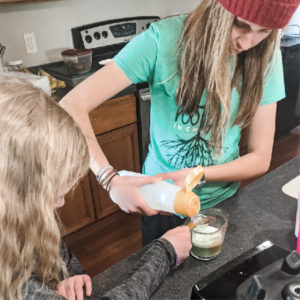 2.1 Add 2 Tablespoons of liquid detergent and swirl to mix.
2.1 Add 2 Tablespoons of liquid detergent and swirl to mix.
2.2 Let the mixture stand for 5 – 10 minutes.
The detergent captures the proteins & lipids of the cell membrane, breaking the DNA free from both the cell wall and nucleic envelope.
Step Three: Enzyme Addition
3.1 Pour the mixture into a test tube or other small glass container, filling it 1/3 of the way.
3.2 Add a pinch of meat tenderizer, a small squirt of contact solution, or a 1/8 tsp of pineapple juice to solution.
3.3 Stir gently – if stirred too hard the DNA will break up and be more difficult to see!
DNA inside a nucleus of a cell is folded and protected by proteins. The enzymes added in this step snip away the protein from the DNA.
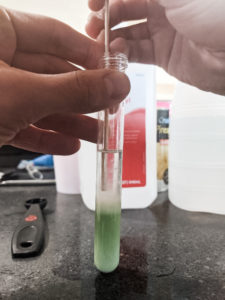 Step Four: DNA Separation
Step Four: DNA Separation
4.1 Tilt test tube and slowly add rubbing alcohol into the tube down the side so it floats on top of the pea mixture. Add enough so there are equal parts pea mixture and rubbing alcohol.
The alcohol is less dense than water so it floats on top.
4.2 The lipids and proteins of the cell wall prefer the watery layer on the bottom.
Do you see those clumps of white stringy stuff between the water and the alcohol layers? That’s the DNA, unraveled!
4.3 Use the wooden skewer to spin and ‘wrap’ the DNA around the rod so it can be removed from the liquid. in addition to 3rd party testing
You’ve done it! Normally DNA is tightly and efficiently packed together inside cells. Even without the cell membrane it still wants to stick together, but ends up being clumpier without the help of the membrane. 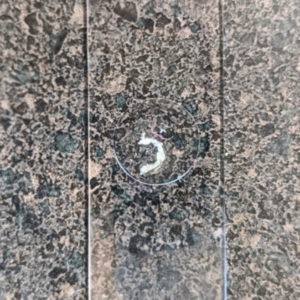
Try the experiment again and create a variable – try a different enzyme, detergent, or DNA food source. Vary the ratios involved. What happens? The world is yours to discover!
Quality Assurance at Entegro
*Here at Entegro Health, we are grateful to partner with Dordt University’s biology department for much of our research and scientific reference. This partnership allows us to internally test for identification of the bacteria with the qPCR in addition to 3rd party testing.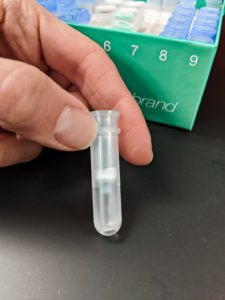
This is the DNA extracted from 15 ml of Flourish after following a series of steps that utilize buffers, enzymes, and filters similar to the experiment above.
This DNA is added to the wells. Primers for each bacteria genre are added as well as SYBR Green enzyme, the key to the qPCR machine.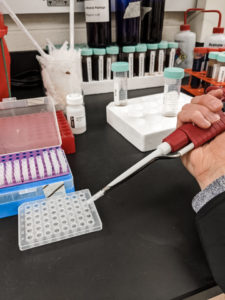
It’s difficult to tell, but this tray is all prepped and ready for the seal before heading into the qPCR.
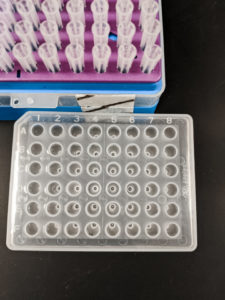
Try other virtual labs from this same experiment source: https://learn.genetics.utah.edu/content/labs/
Here’s a nice little TED Ed video that talks about human DNA: https://www.youtube.com/watch?v=aeAL6xThfL8
DNA’s unsung hero Rosalind Franklin: https://www.youtube.com/watch?v=BIP0lYrdirI
Written by Lorilyn Van Dyke, entegro Health

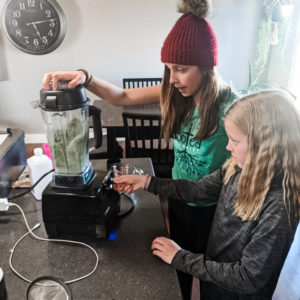
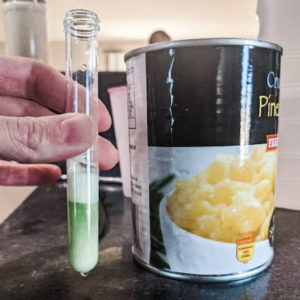
 New customers! Get 11% OFF your first Flourish order with Code FRESHSTART11
New customers! Get 11% OFF your first Flourish order with Code FRESHSTART11